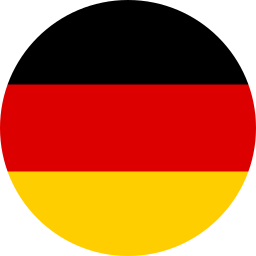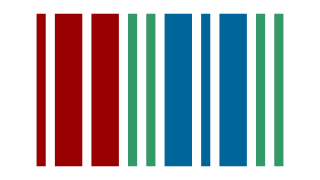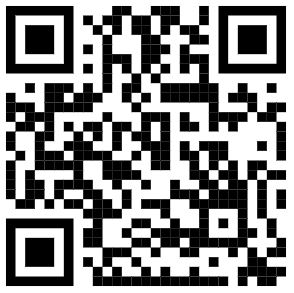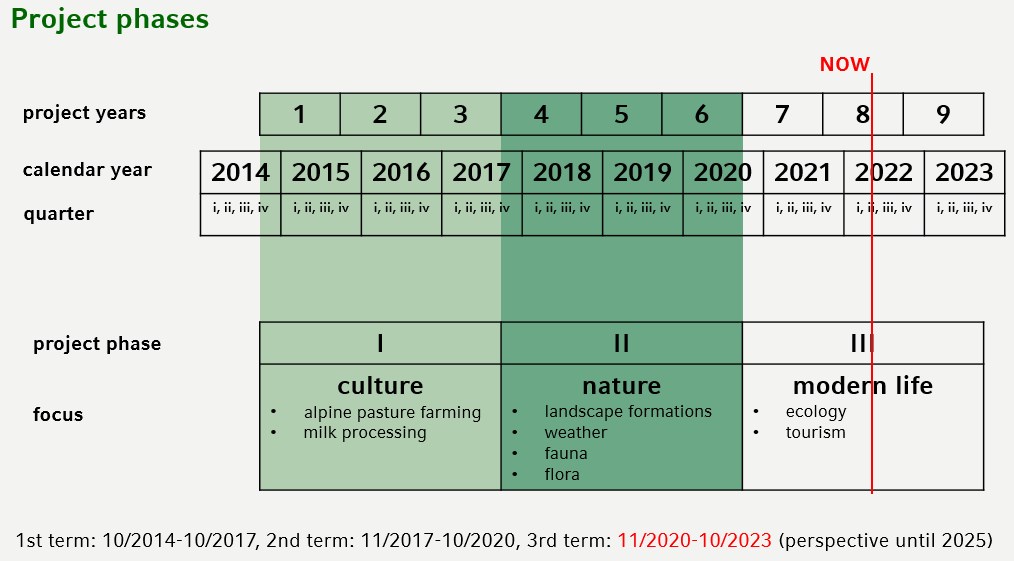A (very) short introduction to the research project VerbaAlpina (Stephan Lücke)
Project Overview
- Title: VerbaAlpina. The Alpine cultural region reflected through its multilingualism
- Long term project funded by the German Research Foundation (DFG)
- Start in 2014
- Aim: Lexicographical documentation and investigation of the multilingual Alpine region
- Cooperation of (geo-)linguistics and Digital Humanities (DH)
- Project leaders: Thomas Krefeld (Linguistics), Stephan Lücke (DH)
- Staff: 2 (3 until 2020) linguists, 2 computer scientists, aides/assistants
What VerbaAlpina does or is …
- Collection of lexemes denoting selected concepts typical for the Alpine region (such as traditional economic activities, flora and fauna, ecology and tourism)
- Example: What words are used to denote „BUTTER“ in different regions of the Alps (Butter, beurre, burro, Anke … ⇒ VA-Map)
- Focus on dialects (not national/standard languages)
- Speech atlas and dictionary in one (impossible in the era of letterpress)
- Central feature: Publication of data on high-performance online map (WebGL). Here lexicographical (and, synoptically, other) data can be visualized
- Commitment to Open Science (compliance with FAIR principles): collected data and developed technology open to free reuse
- Fully digital (no use of paper at all): multifunctional web portal (WordPress; Backend: MySQL database)
- special project aim: exploration of consequences, limitations, and challenges of consequent digitization
- Method reflection (section „Methodologie“; i. a. reflections on profit and challenges of DH)
Area under investigation
- Area of investigation is limited to the territorial borders ("perimeter") defined by the Alpine convention (the Alpine Convention is an international treaty signed in 1991 aiming at the protection and the development of the Alps)
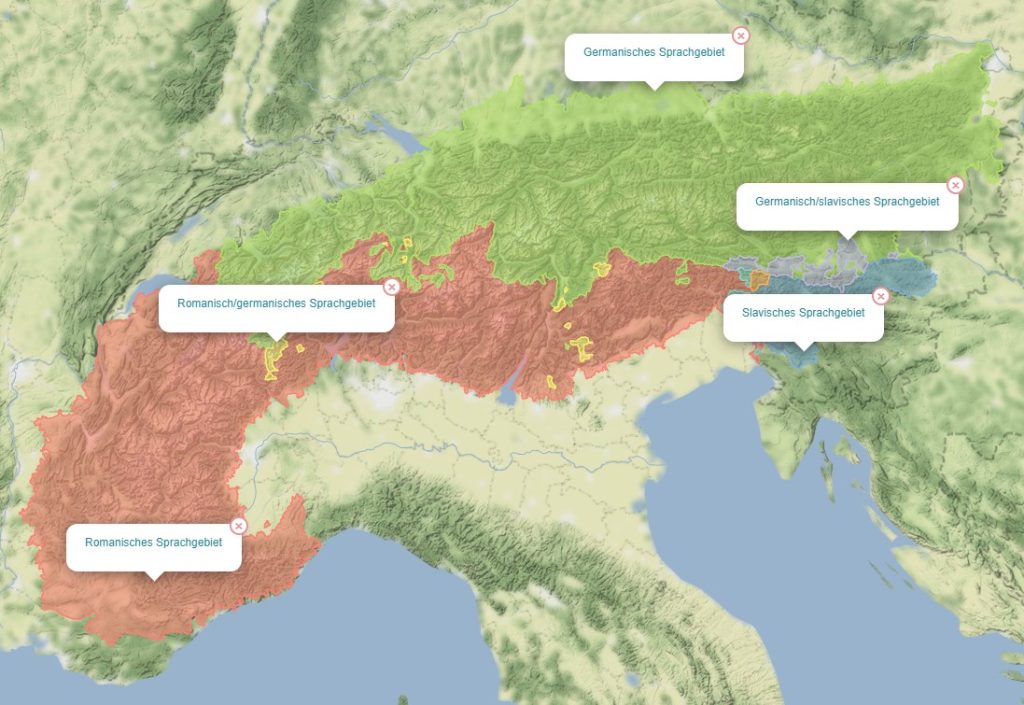
Areas of language families within the perimeter of the Alpine Convention. Apart from the three large homophone areas there are several smaller areas two or, in one case, even more language families are present.
- encompasses parts of six different countries (D, A, CH, I, F, SLO) and two entire countries (FL, MC) with 5771 municipalities
- the perimeter of the Alpine Convention comprises the spread of three language families:
- germanic (green),
- romance (red),
- slavonic (blue)
- included are also areas of plurilingualism, e. g. the small yellow areas on the map above
- Within the perimeter of the Alpine Convention ethnographic and topographic homogeneity contrasts to strong linguistic heterogeneity
Where our data come from …
Mainly three different sources:
- printed atlases/dictionaries (condition: georeferenced; example atlas: AIS)
- digital material from project partners
- crowdsourcing (particularly important for current project phase)
The Alpine region and the tradition of ethnolinguistics (Thomas Krefeld)
- The Alpine region represents a cultural area of great historical depth (with evidence since the Bronze Age; cf. Reitmaier 2021, Mandl 2014).
- Cultural areas are defined by a network of skills ('Kulturtechniken') that have developed against the background of natural conditions.
- Among these skills are languages, especially dialects; they are of particular importance from the perspective of the humanities because they provide a privileged insight into the historical depth of the cultural networks to which they themselves belong.
- When geolinguistics examines linguistic variation in the context of other cultural skills, it may be called ethnolinguistics (cf. also Krefeld 2021).
Prototypical example: Alpine dairying
- Natural conditions of Alpine cultural areas: woodland up to a certain altitude (tree line), grassland with scree slopes and rock above
- Appropriate cultural skills for subsistence: animal keeping and dairying
- Current dialectal variation in dairy terminology reflects all known historical phases (or: strata) and thus guarantees their cultural memory.
| CURRENT AREAS | Romance | Germanic (German) | Slavic (Slovenian) | |
| AUSTR. GER. SUPERSTR. | ||||
| GER. SUPERSTRATUM | SLAW. SUB. | |||
| ROMANCE SUBSTRATUM | ||||
| LATE ANTIQUITY AREAS | Latin-Romance | |||
| PRELATIN SUBSTRATUM | ||||
| Linguistic stratigraphy of the Alpine region (simplified schema) | ||||
Example: ZIGER / RICOTTA, a kind of cheese made from whey, on the base of the protein albumin (not casein)
empirical base: VA-Map ZIGER
| CURRENT AREAS | Romance brousse - puina - zigra |
Germanic (German) Ziger |
Slavic (Slovenian) skuta |
|
| AUSTR. GER. SUPERSTR. | ||||
| GER. SUPERSTRATUM | SLAW. SUB. | |||
| ROMANCE SUBSTRATUM | ||||
| LATE ANTIQUITY AREAS | Latin-Romance excocta | |||
| PRELATIN SUBSTRATUM *brottiare - *puina - *tsigros | ||||
| Stratigraphy of a few designations of ZIGER | ||||
The designations of other milk products as CREAM, BUTTER, CHEESE, WHEY, or places of production as HIGH ALTITUDE PASTURE, etc. paint a similar picture.
⇒ The protection of natural areas implies the protection of corresponding cultural skills, including in particular local languages/dialects or, at least their memory.
Bibliographie
- Krefeld 2021 = Krefeld, Thomas (2021): Italienische Ethnolinguistik, München, in: Vorlesung dh-lehre. Link
- Mandl 2014 = Mandl, Franz: LACKENMOOSALM 1984-2014. 30 Jahre archäologisch-interdisziplinäre Forschungsprojekte auf dem Dachsteingebirge. Link
- Reitmaier 2021 = Reitmaier, Thomas: Prähistorische Weide- und Alpwirtschaft – Stand der Forschung und zukünftige Perspektiven am Beispiel des Silvrettaprojektes Mit einem Potpourri aus achtzig Jahren Forschungsgeschichte, in: Forschungsberichte der ANISA für das Internet, vol. 1. Link

